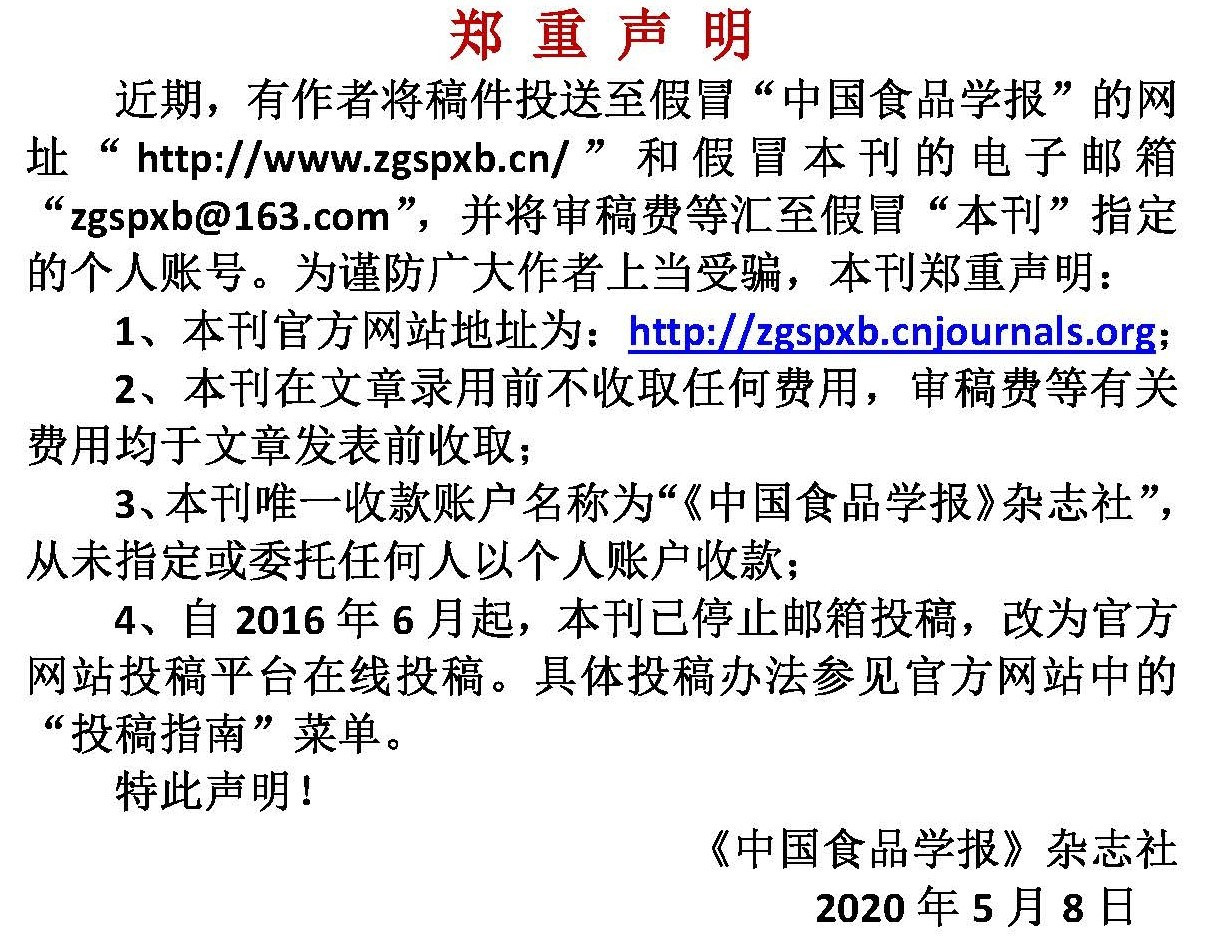1株唐菖蒲伯克霍尔德氏菌在湿米粉中的产毒规律分析
作者:
作者单位:
(1.南方医科大学公共卫生学院 广州 510515;2.广东省疾病预防控制中心 广东省公共卫生研究院 广州 511430;3.广东省疾病预防控制中心 广东省新发传染病应急检测技术研究与应用重点实验室 广州 511430;4.广州市疾病预防控制中心 广州 511440)
作者简介:
通讯作者:
中图分类号:
基金项目:
广东省自然科学基金项目(2020A1515010663,2021A1515012193)
Analysis of the Toxic Production of Burkholderia gladiolus in Wet Rice Flour Culture Medium
Author:
Affiliation:
(1.School of Public Health, Southern Medical University, Guangzhou 510515;2.Guangdong Provincial Institute of Public Health, Guangdong Provincial Center for Disease Control and Prevention, Guangzhou 511430;3.Guangdong Provincial Key Laboratory of Pathogen Detection for Emerging Disease Response,Guangdong Provincial Center for Disease Control and Prevention, Guangzhou 511430;4.Guangzhou Center for Disease Control and Prevention, Guangzhou 511440)
Fund Project:
引用本文
陈子慧,王海燕,陈少威,黄芮,蒋琦,王萍,袁俊,张永慧.1株唐菖蒲伯克霍尔德氏菌在湿米粉中的产毒规律分析[J].中国食品学报,2023,23(12):70-76
复制分享
文章指标
- 点击次数:
- 下载次数:
- HTML阅读次数:
历史
- 收稿日期:2023-08-02
- 最后修改日期:
- 录用日期:
- 在线发布日期: 2024-01-23
- 出版日期:
文章二维码

版权所有 :《中国食品学报》杂志社 京ICP备09084417号-4
地址 :北京市海淀区阜成路北三街8号9层 邮政编码 :100048
电话 :010-65223596 65265375 电子邮箱 :chinaspxb@vip.163.com
技术支持:北京勤云科技发展有限公司
地址 :北京市海淀区阜成路北三街8号9层 邮政编码 :100048
电话 :010-65223596 65265375 电子邮箱 :chinaspxb@vip.163.com
技术支持:北京勤云科技发展有限公司
